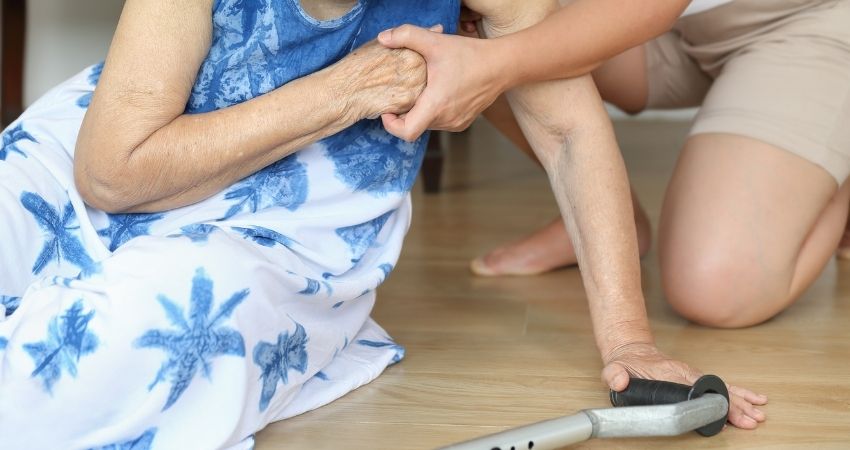Falls are all-too-common for older adults. According to the National Council on Aging, an older adult is treated in the ER every 11 seconds for a fall-related injury. Even more shocking is that a senior sustains a fatal fall every 19 minutes, making fall-related injuries one of the leading causes of death in seniors.
Data provided by the Centers for Disease Control and Prevention’s (CDC) Health United States Report 2016, shows that not only are falls the number-one cause of emergency hospital visits for individuals 65 years of age and older, but other causes of injury don’t even compare.
Based on the high likelihood of falling, many seniors have purchased personal emergency response systems (PERS) which offer a convenient, simple, and efficient way to call for help in an emergency. PERS aren’t just for use inside the home. With technology advancements, some PERS can offer monitoring and coverage even outside the home allowing seniors more independence and enhancing safety while on vacation, running errands, attending social events, or visiting friends and family.
How does a personal emergency response system work?
A user of a personal emergency response system is connected to a state-of-the-art emergency response center where trained professionals are ready to receive the call and take appropriate action to get help.
When the medical alert call button is pressed, a signal is transmitted to the personal emergency response system medical alarm console which immediately contacts a monitoring center. Within moments a real person is talking to the user, armed with their personal medical information, and ready to send help. 24 hours a day, seven days a week someone is there, maintaining voice contact until help arrives.
Unlike systems that can be programmed to dial a neighbor, friend, relative, or even 911, personal emergency response systems connect the user to help immediately.
When evaluating a PERS, several factors should be considered:
- Device and Feature Availability: Look for a company that offers a few different types of medical alert systems and add-on devices. Features to look for include automatic fall detection, GPS location tracking, and/or a mobile app for caregivers.
- Reliable Equipment: Most medical alert equipment claims to be built to last. Help buttons and base stations should be able to withstand a fall, and the systems as a whole should last for a number of years.
- Ease of Use: The goal of a medical alert system is to simplify life, giving peace of mind to both the user and their caregivers, so look for systems that streamline the process, and are easy to operate.
- Costs and Contracts: Look for a company that has the features you need and within your budget. Try to avoid paying any unnecessary equipment fees or signing a restrictive multi-year contract.
- Customer Service: All companies must provide live customer service and sales support over the phone or via online chat. However look for Google and Better Business Bureau reviews and ratings to ensure the company is responsive.
- Monitoring Center Reliability: All companies’ monitoring centers must be third-party certified and have a backup power system and/or a backup center where they can divert calls in the event of power outages. A live agent must respond to all emergency calls at the monitoring center.
Seconds count in emergency situations, and a personal emergency response system can save a life.


How wonderful to know that live customer service and chat are required for companies. I am moving this month and want to make sure my family is taken care of if there is an emergency. I will find a great urgent medical care for us nearby.